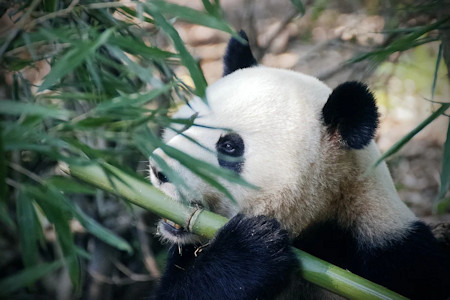For centuries Pandas have been a symbol of peace in China. Wars and feuds would come to an end on the raising of flags with symbols of pandas on them. A sign of peace that has endured till today.
Click to see available Asian escorts now
China has, since the 70’s, gifted many pandas to different countries such as Japan, United States, Britain, France and others as a sign of peace and friendship. The panda is of huge importance to the Chinese national identity and it is considered as the national treasure of China. Rather than seeing this cute bear as a slow, cumbersome and at times clumsy animal the Chinese see the panda as a true warrior. Pandas are resourceful animals, able to find food for themselves, climb trees, and withstand extremely cold temperatures.
Does The Panda Really Have Thumbs?
If you have watched any of the thousands of online clips showing these cute black and white bears sitting on their rears and chomping away at bamboo stalks you may have noticed how the Panda grips it's food. It appears to have 5 fingers/claws as well as a 6th appendage which by all intents and purposes seems to look and perform like a thumb helping the hungry bear have a much better grip of the stalk in hand! If it looks like a thumb and it performs like a thumb then it must be thumb, right? Wrong! The panda's thumb is in fact an elongated wrist bone, jutting out far enough to allow the panda to use in tandem with the five fingers to get a good grip on the rather slippery and thin stalks of bamboo. This has been an evolutionary physical change vital to the survival of the panda. These large, hefty bears, often weighing in at 110kg plus when fully grown, need to eat large amounts of this fairly energy-poor plant, which is mainly made up of indigestible fiber, to be able sustain themselves. Adult pandas can get through up to 38kg of bamboo daily so it's vital to have the tools to make eating such vast amounts as easy and trouble free as possible. And so, evolution has once again come to the rescue by giving the panda a 'thumb'.

What To Do When Face To Face With A Panda?
RUN! Well, the likelihood is that you will never come face to face with a giant panda, unless separated by a toughened glass or from a viewing gallery at a zoo. But if you ever do then the advice be to just run, or even jog away! You see, unlike their cousins, the black bear who can run at up to 35 miles per hour, the panda can only manage a slow trot. Their short hind legs just don’t have the strength or length or carry them very fast or very far. Plenty of time for you to leisurely jog away from the scene!
Sad Fact Time!
Giant pandas have been on the endangered species list for some time. With poaching for fur, loss of habitat and all the other usually man made strains on their existence the number of pandas in the wild is thought to be under 2000 and some 600 more held in captivity. The long term existence of these beautiful animals is a fragile one, even more so when more than half of newborn pandas are prone to die and not make it to their first birthday. Often dying from diseases but also from being accidentally crushed by their mother. This happens all too often in the wild but the news is far better when it comes to pandas in captivity with survival rates of 90% plus being reported in parts of China.
The Lifespan Of The Panda
In the wild pandas can survive for up to 20 years. The many man-made dangers as well as natural diseases shorten the lifespan of these animals dramatically compared to those in captivity who can live up to 30 years. Either way, that is a short existence and you would think the panda would be busy attending to all the items on his bucket list! In fact, the panda spends up to 14 hours a day just sitting and eating and around 10 hours sleeping which leaves little time for little else. What a life!
Want To Help?
The World Wide Fund for Nature or WWF as they are more commonly known are a non-governmental organization that have been helping to protect animals against the impact of human development since the early 60's. You have probably seen their logo of a cute panda bear! You can help the WWF protect these endangered animals by adopting a panda. Click here to adopt a panda.

